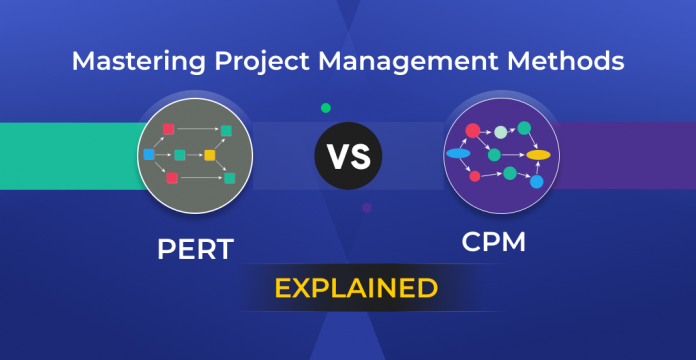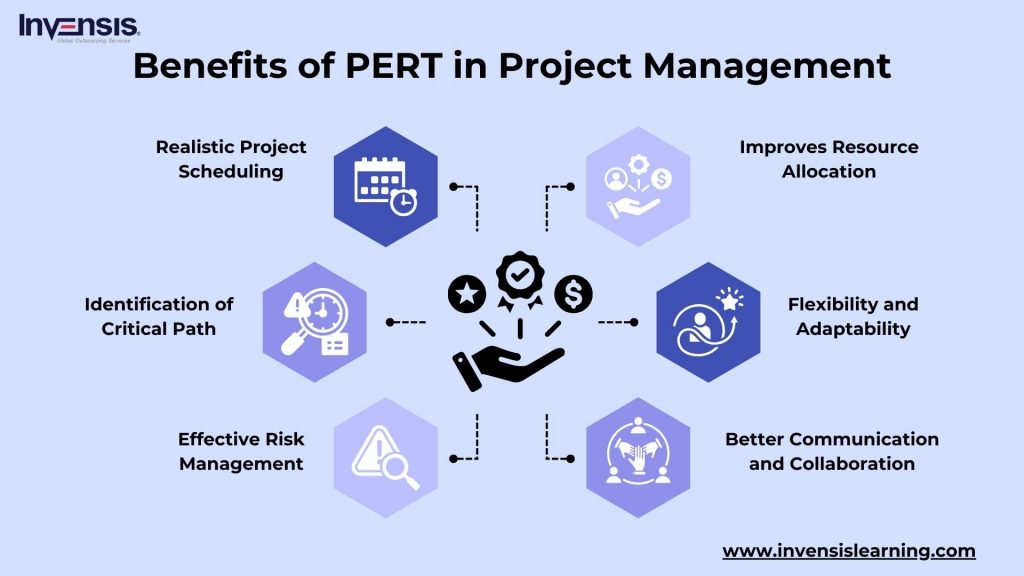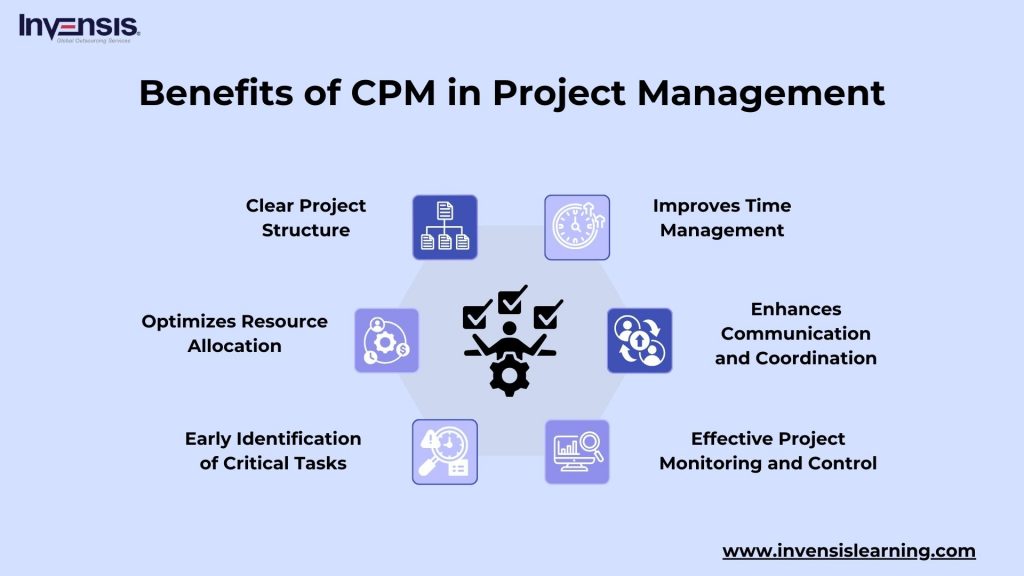

In project management, effective planning and scheduling are essential to success. Two widely utilized methodologies, the Program Evaluation and Review Technique (PERT) and Critical Path Method (CPM), offer distinct approaches to project scheduling, each with unique advantages.
Understanding the difference between PERT and CPM is essential for project managers and professionals seeking to optimize project timelines and resources.
This comprehensive guide helps you explore the key differences between PERT and CPM, exploring their definitions, examples, and benefits in project management . By the end, you’ll have the insights to make informed decisions and propel your projects toward completion.
Table of Contents:
Program Evaluation and Review Technique (PERT) is a project management methodology used to analyze and represent the tasks involved in completing a project. It was developed in the late 1950s by the United States Navy for the Polaris missile project.
PERT helps project managers estimate the time required to complete each task and identify the critical path—the sequence of tasks that must be completed on time for the project to finish within the desired timeframe.
PERT employs probabilistic time estimates, allowing for uncertainties and variations in task durations. This method is particularly useful for complex projects with interdependent tasks and uncertain durations, as it provides a probabilistic estimate of the project’s duration and helps managers allocate resources effectively.
PERT (Program Evaluation and Review Technique) offers several advantages for project managers, particularly when dealing with projects that have inherent uncertainties in task durations.
Here are some key benefits:

PERT accounts for variability in task times by considering optimistic, pessimistic, and most likely durations. This creates a more realistic project schedule than methods that depend on single-point estimates.
PERT helps identify the critical path, which is the sequence of tasks that directly impacts the project timeline. By focusing resources on critical path activities, project managers can minimize delays.
By understanding the variability in task durations, PERT allows project managers to identify potential risks and develop plans proactively. This proactive approach helps mitigate the impact of unexpected events on project timelines .
PERT can identify tasks with slack (buffer time) within the schedule. This allows for better resource allocation by assigning resources to tasks on the critical path or with a high risk of slipping.
PERT is well-suited for dynamic projects where task durations and dependencies might change. Its probabilistic nature allows for adjustments to the schedule as the project progresses.
The visual representation of a PERT chart fosters communication and collaboration among project stakeholders. Everyone involved can see the dependencies between tasks and the overall project timeline, leading to a more cohesive project team.
In the following example, we will consider the Launching a New Website as our project. We will break down the project into various tasks, estimate the time required for each task, determine the critical path, and calculate the expected project completion time using PERT.
Let’s use the example of launching a new website to illustrate how PERT works:
| Task | Optimistic Time (days) | Most Likely Time (days) | Pessimistic Time (days) |
| Domain Registration (1) | 1 | 2 | 3 |
| Website Design (2) | 5 | 7 | 10 |
| Content Creation (3) | 3 | 5 | 8 |
| Development (4) | 8 | 12 | 15 |
| Testing (5) | 2 | 4 | 6 |
| Deployment (6) | 1 | 1 | 2 |
We can use the PERT formula (Optimistic Time + (4 * Most Likely Time) + Pessimistic Time) / 6 to calculate the expected time for each task:
By analyzing the tasks and their expected times, we can identify the critical path. This is the sequence of tasks with the total expected time equal to the overall project duration.
In this example, the critical path is:
The critical path has a total expected duration of 2.33 days (Domain Registration) + 7.67 days (Website Design) + 12.33 days (Development) + 4.33 days (Testing) + 1.33 days (Deployment) = 28 days.
This represents the minimum time it would likely take to launch the website, assuming everything goes according to the most likely time estimates.
Critical Path Method (CPM) is a project management technique to schedule and manage complex projects. Unlike PERT, which incorporates probabilistic time estimates, CPM focuses on deterministic time estimates, meaning task durations are assumed to be fixed and known with certainty.
CPM identifies the critical path and the longest sequence of dependent tasks and determines the shortest possible project completion duration.
Tasks on the critical path have zero slack or float, meaning any delay in these tasks will directly impact the project’s overall duration. CPM helps project managers allocate resources efficiently, prioritize tasks, and identify potential bottlenecks to ensure timely project completion. It is widely used in construction, engineering, and manufacturing industries where project timelines are critical.
The Critical Path Method (CPM) offers a valuable toolkit for project managers, particularly when dealing with projects that have well-defined activity durations.
Here are some key benefits of using CPM:

CPM provides a clear and structured framework for organizing project tasks, dependencies, and timelines, enabling project managers to understand the project’s scope and requirements more effectively.
By identifying the critical path—the sequence of tasks that determines the project’s duration—CPM helps project managers allocate resources more efficiently. Resources can be directed towards critical tasks to ensure they are completed on time, minimizing project delays.
CPM allows project managers to identify critical tasks early in the project lifecycle. By focusing on these critical tasks, project managers can proactively manage potential risks and address any issues that may arise, thereby reducing the likelihood of project delays.
With CPM, project managers can develop realistic project schedules based on the estimated durations of individual tasks and their dependencies. This allows for better time management, ensuring that tasks are completed on schedule and that the project stays on track.
CPM facilitates communication and coordination among project team members by providing a clear roadmap of project tasks and deadlines. This helps to ensure that everyone is aligned on project objectives and timelines, fostering collaboration and teamwork.
CPM enables project managers to monitor progress against the project schedule and identify any deviations or delays in real time. This allows timely corrective actions to keep the project on track and minimize disruptions
While CPM shines in projects with predictable durations, its principles can be applied to various scenarios. Let’s see how CPM can be used for a website redesign project. We’ll explore how breaking down the tasks, identifying dependencies, and using fixed time estimates helps us create a clear and efficient project schedule .
Here’s an illustration of how CPM can be applied to a website redesign project:
| Task | Deterministic Time (days) |
| Content Audit (A) | 2 |
| Information Architecture (B) | 1 |
| Wireframing (C) | 2 |
| Visual Design (D) | 3 |
| Front-End Development (E) | 5 |
| Content Integration (F) | 2 |
| Quality Assurance (QA) Testing (G) | 1 |
| Deployment (H) | 1 |
By analyzing the tasks and their durations, we can identify the critical path. This is the sequence of tasks that dictates the overall project timeline.
In this example, the critical path is:
The critical path has a total duration of 2 days (Content Audit) + 1 day (Information Architecture) + 2 days (Wireframing) + 3 days (Visual Design) + 5 days (Front-End Development) + 2 days (Content Integration) + 1 day (QA Testing) + 1 day (Deployment) = 17 days.
This is the minimum time required to complete the website redesign, assuming everything goes according to plan with the fixed durations.
PERT (Project Evaluation and Review Technique) and CPM (Critical Path Method) are project management techniques used to schedule, organize, and manage tasks within a project. While they share similarities and are often used together, they have distinct characteristics:
| Aspect | PERT | CPM |
| Technique | Utilizes probabilistic time estimates for scheduling, considering uncertainty and variability in project durations | Relies on deterministic time estimates, assuming fixed task durations for straightforward scheduling |
| Focus | Helps you understand the overall project timeline when there are a lot of unknowns | Helps you identify the most important tasks that determine the project’s overall timeline |
| Orientation | Focuses on key milestones in the project, like reaching the campsite | Focuses on the individual tasks involved, like packing, driving, and setting up camp |
| Model Type | Uses a statistical approach to account for the variability in how long things might take | Uses a more rigid model, assuming fixed durations for each activity |
| Time Estimates | Includes optimistic, most likely, and pessimistic estimates, providing a range of completion times | Uses a single best-estimate duration for each activity |
Understanding the differences between PERT and CPM is vital for effective project management. While both methodologies serve the purpose of planning and scheduling projects, they diverge in their approach to task durations, critical path calculation, and resource allocation.
PERT, with its probabilistic time estimates, suits projects with high uncertainty, offering flexibility in scheduling.
By grasping the variations of PERT and CPM, project managers can make informed decisions to streamline project workflows, optimize resource allocation, and ensure successful project completion.
Ready to master project management with precision? Explore Project Management Certification Courses at Invensis Learning and gain expertise in PERT, CPM, and more. Equip yourself with the tools to manage projects and optimize workflows effectively.
Take the next step in your career journey today!
EXIN Business Analysis Foundation and Practitioner Training